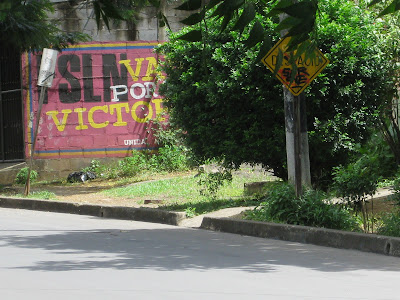Nine days of Rio de Janeiro
Bem-vindo ao Rio de Janeiro! (pronounced hee-oh de ja-nay-roo)
The only word I can use to describe Rio de Janeiro is intoxicating. I feel like that word best fits the tropical seduction that is A Cidade Maravilhosa, the Marvelous City. I've been in this city for over a week now, and it has quickly become one of my favorites. From its impossibly steep hills, to the sidewalks and everything in between (mostly the women), Rio makes you want to quit your job as a guide and live here permanently. Arriving to the city for the first time was a dream come true. I had wanted to see Brasil and Rio since watching Ronaldinho play in the 2006 World Cup. And man, it did not disappoint. I have finished my training, where Kris and I followed another CEO from Santa Cruz, Bolivia all the way to Rio with a group of 12 amazing passengers. We took long train, bus, plane, and van rides, fished for piranhas, rode horses through caiman infested waters, snorkeled in a crystal clear river, marveled at Iguassu Falls, went sailing in colonial Paraty, surfed at Ilha Grande, and drank plenty of caipirinhas along the 16 day journey. Then, after arriving in Rio de Janeiro last Sunday, I had over a week free before my first solo trip starts. What to do...what to do.
Rio de Janeiro means January River in Portuguese. This is only because when the Portuguese first arrived here, the captain thought the massive bay around the city was the mouth of a river (it's not), thus since they had arrived in the month of January, Rio de Janeiro was born. Today, the city is the epicenter-to-be of the world over the next few years, hosting the World Cup in 2014 and the Olympics in 2016. For that, there has been a huge makeover going on in order to prepare for the massive influx of business and tourism the city will see. For example, para-militarized policeman with large machine guns standing around in the touristy areas of Copacobana and Ipanema is all too normal. Many of the slums, or favelas, that sprawl up the hills around the city are currently under the process of "pacification", in order to combat the organized criminals that run them. Today, you can follow a guide for a once and a lifetime tour through a favela, which is what we got to do our first day in the city.
 |
| Rocinho favela |
 |
| Christ Redeemer Statue. You can see it just about anywhere in the city and beyond. |
And then it was back to the tropical seduction that are the beaches of Copacobana and Ipanema. What makes these places so incredible is that if you are not on the beach, you feel like you are in the middle of a city. It is a perfect combination of cosmopolitan city life with chill beach town. High rise apartments and other buildings tower above you. Business men and woman rush to work and suicidal cab drivers yell at you when you clearly have the right of way to cross the street. And then you see a guy in a wet suit and a surf board in his arm walking to the subway station. Walk one block down and the buildings open up to one of the most beautiful beaches in the world surrounded by lush jungle (and beautiful women). On Ipanema beach, you can spend a whole day sitting in a cadeira, rentable chair, and watch surfers (and beautiful women) shred massive waves (apply sunscreen), while drinking cans of Cerveja Brahma, which is what I did on the 4th of July for the entire day. If at any point you are hungry or thirsty, nearly every corner in Rio has a walk up juice bar which provides hamburgers for about $3, coconut water (from a coconut), and my new favorite food, Açaí. Açaí is a berry that can be found in the Amazon that is supposed to be a superfood rich in all that healthy stuff. You order an "açaí na copa" açaí in a cup, and you get a frozen purple açaí pulp with bananas, granola, and honey on top if your feeling awesome. Have a big cup of açaí and a coconut for breakfast and you are instantly recovered from any whacky night A Cidade Maravilosa will provide for you. Nine days free in this place can turn anyone's world upside down.




Comments
Post a Comment